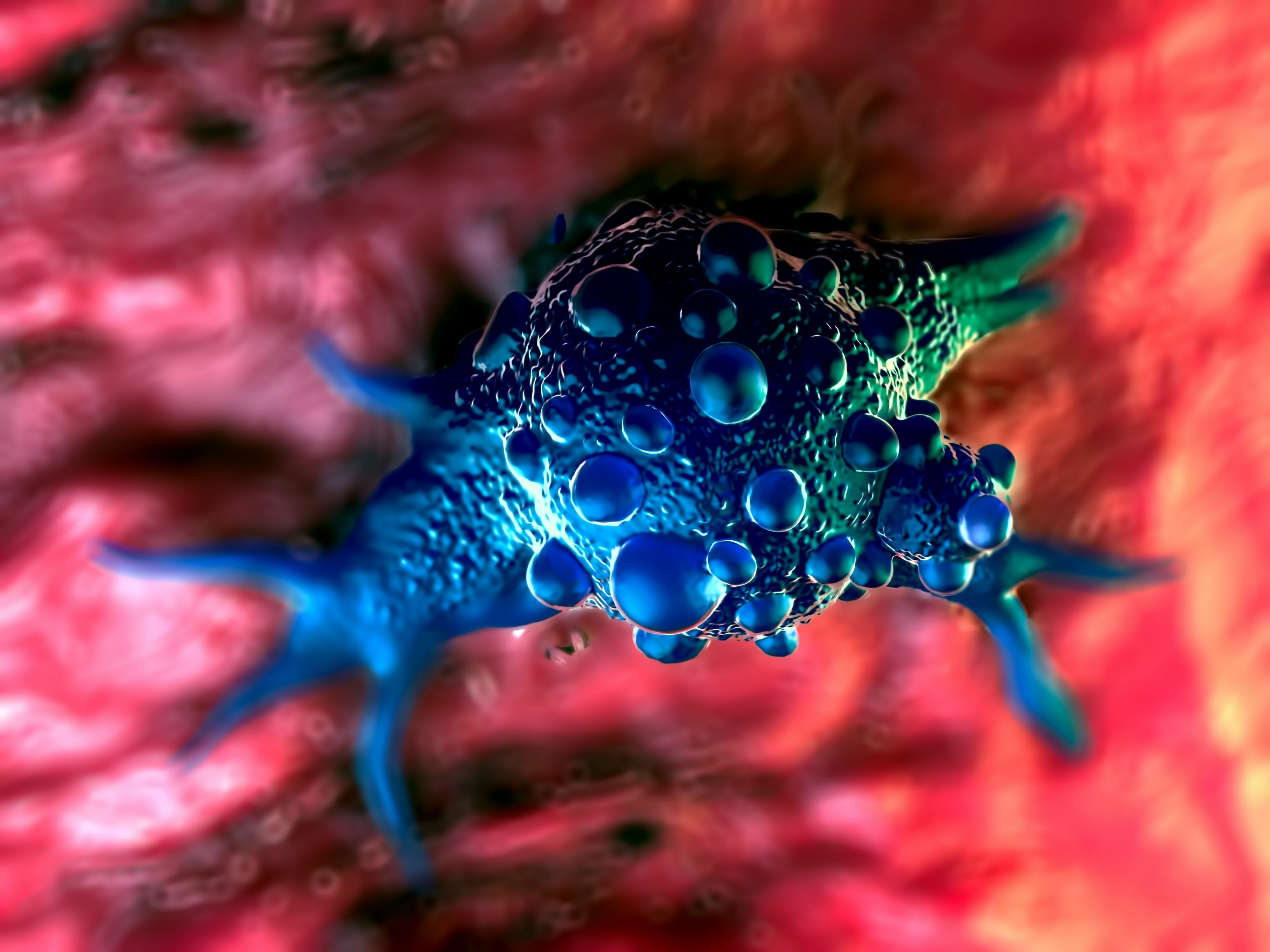SunRISE Program Incites Optimism About the Future of High-Risk, BCG-Unresponsive NMIBC Treatment
In an interview with Targeted Oncology, Siamak Daneshmand, MD, discussed TAR-200 as seen in the SunRISE-1 trial and the what is up next for the treatment landscape of high-risk BCG-unresponsive non-muscle invasive bladder cancer.
Siamak Daneshmand, MD

Use of a novel agent, TAR-200, was investigated in the phase 1 SunRISE-1 study (NCT04640623) and demonstrated an encouraging complete response (CR) rate and tolerable safety profile in patients with high-risk non-muscle invasive bladder cancer (NMIBC), according to preliminary results from the study.
During a presentation at the America Urological Association (AUA) 2023 Annual Meeting, Siamak Daneshmand, MD, explained that patients with high-risk NIMBC who are unresponsive to intravesical have limited treatment options, which calls for novel mechanisms.
“TAR-200 is a sort of a pretzel device. It’s a novel drug delivery mechanism that’s placed inside the bladder, for sustained release of gemcitabine. These are tablets within the little pretzel device that are placed in the in the bladder through a special catheter and stylet. They are very easily placed in the office setting,” Daneshmand, professor of urology at the Keck School of Medicine of USC told Targeted Oncology™, in an interview.
In the study, TAR-200 was compared with the novel anti-PD-1 monoclonal antibody cetrelimab (JNJ-63723283). With TAR-200 treatment in 13 patients, there was a centrally confirmed CR by urine cytology and/or biopsy of 88% (95% CI, 47%-100%) vs 38% (95% CI, 9%-76%) with cetrelimab. At a median follow-up of 13.6 months in the TAR-200 arm and 12.0 months in the cetrelimab arm, the median duration of response was not reached in either arm.
Safety findings showed that most of the treatment-emergent adverse events (TEAEs) that occurred were low grade. The most common TEAEs in the TAR-200 arm were pollakiuria (39%), micturition urgency (39%), and noninfective cystitis (39%), and the most common TEAEs in the cetrelimab arm were fatigue (23%) and lipase increased (23%).
In the interview, Daneshmand discussed TAR-200 as seen in the SunRISE-1 trial and what is up next for the treatment landscape of high-risk BCG-unresponsive NIMBC.
TARGETED ONCOLOGY: Can you discuss the current treatment options for NMIBC and what outcome are seen with these therapies?
Daneshmand: General treatment for non-muscle invasive bladder cancer would be intravesical BCG. That's what we've been relying on for many years. But a significant portion of patients are refractory to BCG and end up having recurrences and more importantly, progression to higher-stage disease. There's a real need unmet need for these patients because we have a paucity of treatment options for these patients.
Image Credit: © PRB ARTS - stock.adobe.com

Currently, for patients with BCG-unresponsive or refractory disease, the guidelines encourage clinical trial enrollment. We do have doublet chemotherapy available to us, which shows some good responses in many patients, but the data is retrospective and we're trying to see what data will show in prospective studies. Also, in this BCG-unresponsive space, we do have pembrolizumab [Keytruda] that was approved a couple of years ago for BCG-refractory carcinoma in situ. Pembrolizumab is used in some settings with some success, but the success rates are at 1 year, and it’s only 19%. We do need other treatments in this space that are both more efficacious and have a better duration of response.
Also recently, nadofaragene firadenovec-vncg [Adstiladrin] was FDA-approved in this setting, but we still don’t have the drug commercially available to us. Again, our options are somewhat limited in the in the space right now.
What can you tell the oncology community about TAR-200?
TAR-200 is a sort of a pretzel device. It's a novel drug delivery mechanism that's placed inside the bladder, for sustained release of gemcitabine. These are tablets within the little pretzel device that are placed in the in the bladder through a special catheter and stylet. They are very easily placed in the office setting. The urine creates an automatic pump, and the little tablets will then elude the chemotherapy through a sort of central pour over a sustained period, in this case, 3 weeks. The idea is that if you get the drug in the bladder for a prolonged period, it will be more efficacious. And that's been our experience.
We did have a phase 1 trial in this setting in 2016 and 2017 and saw some complete responses in the pre-cystectomy timeframe. Patients who were not eligible for neoadjuvant chemotherapy underwent this principal device placement 1 month prior to cystectomy. We saw an early signal that this is having a response in the tumor. That is what led to this trial looking at TAR-200 plus cetrelimab, which is a PD-1 inhibitor.
What was unique about the study design and methos used in the SunRISE-1 study?
I think the most unique thing would be just the delivery mechanism. This is the first time we're using a sustained drug release mechanism within the bladder, everything else we've done so far has either been intravesical solutions that are placed in the bladder for about an hour and then drained, or a systemic agent. There's been a lot of interest and use of PD-1 and PD-L1 inhibitors, both inside the bladder as well as just systemic treatment. This is the first time we have a sustained drug release in the bladder with exciting results.
What results were presented during the AUA Annual Meeting?
We have presented the first results, which were from cohort 2 and 3. These cohorts received TAR-200 alone vs the cetrelimab. This is monotherapy. We had 22 evaluable patients for the TAR-200 arm, and 21 patients in the cetrelimab-alone arm. What we found was that the primary objective was CR at any point, and we found a 73% of patients in our TAR-200 alone arm had complete response, which is a high response rate in this refractory patient population. With cetrelimab alone, it was about 36%, which is what we have seen with other PD-1 inhibitors. There's not much surprise there in terms of the efficacy. In terms of duration of response, we have not reached a median duration of response. Fifteen of the 16 responders continue to respond. There's only 1 patient who discontinued treatment, but of the responders, none of them have had a recurrence so far. Again, these are highly encouraging results, and the median follow-up so far is about 11 months, so we're waiting for additional follow-up.
What do these findings mean for the future use of the drugs in the NMIBC space? What are the next steps with this study in particular?
First of all, we're continuing the trial. With further enrollment of patients within these cohorts, we want to see what the combination therapy shows whether there's an additive effect of the PD-1 inhibitor. I think this completely changes the paradigm on how we think about management of patients. This is, again, a sustained release, and that's what we need rather than these 1-hour installations that we're doing. The 1-hour installation are maybe not enough time to penetrate the layers of the bladder that is needed for eradication of disease. I think this is just the beginning.
We already have another trial open called TAR-210 [NCT05316155], which is placing erdafitinib [Balversa] within a pretzel, and that's for patients with FGFR3 alterations. Already, we've sort of moved on to the next step and we have some interesting preliminary results. I think this is going to be part of our armamentarium in the future treatment of non-invasive bladder cancer, and some select muscle invasive bladder cancer as well.
Other trials are open in this space. The SunRISE-2 [NCT04658862], SunRISE-3 [NCT05714202], and SunRISE-4 [NCT04919512] studies are looking at the efficacy of this treatment and sort of the spectrum of disease. SunRISE-2 is looking at patients who have muscle invasive bladder cancer who are not eligible for cystectomy, and they are randomized between cetrelimab plus TAR-200 vs standard of care in that setting. We're sort of looking at this in the muscle invasive disease patients are unfit or unwilling to undergo cystectomy. SunRISE-3 should be opening soon, which goes head-to-head with BCG, in the BCG-naive patient population.
REFERENCES:
Daneshmand S, van der Heijden MS, Jacob JM, et al. First results from SunRISe-1 in patients with BCG unresponsive high-risk non–muscle-invasive bladder cancer receiving TAR-200 in combination with cetrelimab, TAR-200, or cetrelimab alone. Presented at: 2022 American Urological Association Annual Meeting; May 13-16, 2022; New Orleans, LA. Abstract LBA02-03